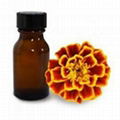| Model: | NH02 |
|---|---|
| Brand: | Nature Herbs |
| Origin: | Made In India |
| Category: | Agriculture & Foods / Gardening / Plant Seeds |
| Label: | Botanical Extracts , Herb Seeds , Essential Oils |
| Price: |
-
|
| Min. Order: | 100 kg |
| Last Online:28 Feb, 2015 |
Centratherum anthelminticum commonly known as ‘black cumin’, a traditional Ayurvedic medicine, has been used for centuries for curing common ailments such as fever, cough, and diarrhoea, and its is also used as a general tonic. A wide range of secondary metabolites such as: aliphatic fatty acids, flavones, saponins, steroids and glycosides have been reported from the C. anthelminticum. Its extracts are reported to possess a wide range of pharmacological activities such as: analgesic, antibacterial, antifungal, antidiuretic, antifilarial, antihelmintic, antihyperglycemic, antimicrobial, antimalarial and antipyretic properties. This review is an effort to summarize the chemical constituents, pharmacological properties of C. anthelminticum.
Centratherum anthelminticum (Willd.) Kuntz belongs to the family compositae. It is is widely useed as a preparation in the Ayurvedic system of medicine preparations and is distributed widely in India, even to the heights of 5500 ft. Certain other plants such as Nigella sativa and Bunium persicum Boiss are also known as kalajiri or black cumin in India, but even than these three species are still called black cumin or kalajiri.
C. anthelminticum is very important in traditional medicine for the treatment of fever, cough, and diarrhoea, and as a general tonic. It is also known to exhibit antiasthmatic, alterative, antiphlegmatic, cardiac, diuretic, digestive and febrifugal properties, and is known to be effective in kidney disorders.
The chemical examination of the oil and seed meal of C. anthelminticum showed that the oil is greenish and semi viscous with a specific gravity of 0.945 and is insoluble in 70% alcohol. The major component of the oil was found to be vernolic acid 70.28%, followed by linoleic 15.84%, oleic 5.65% and palmitic 2.30% and stearic acids 0.42%. The defatted seed meal were found to contain 5.2% ash and 28.4% protein.











